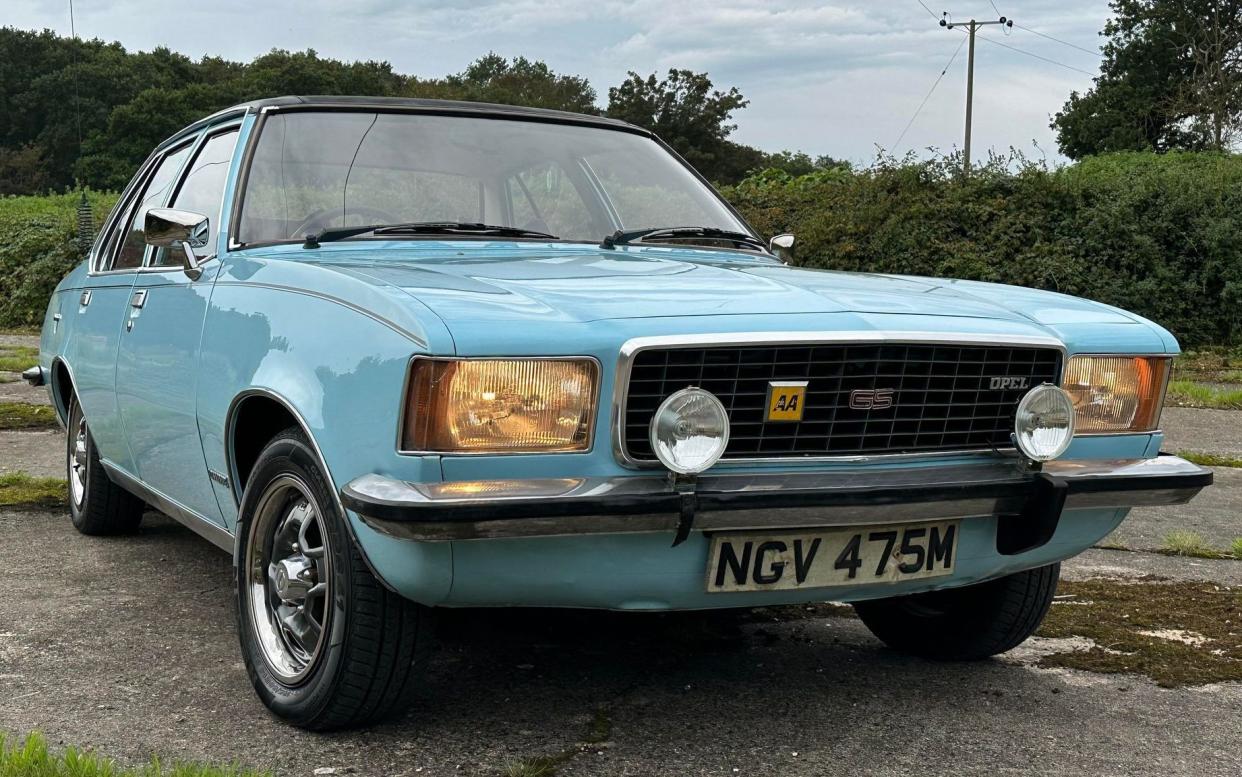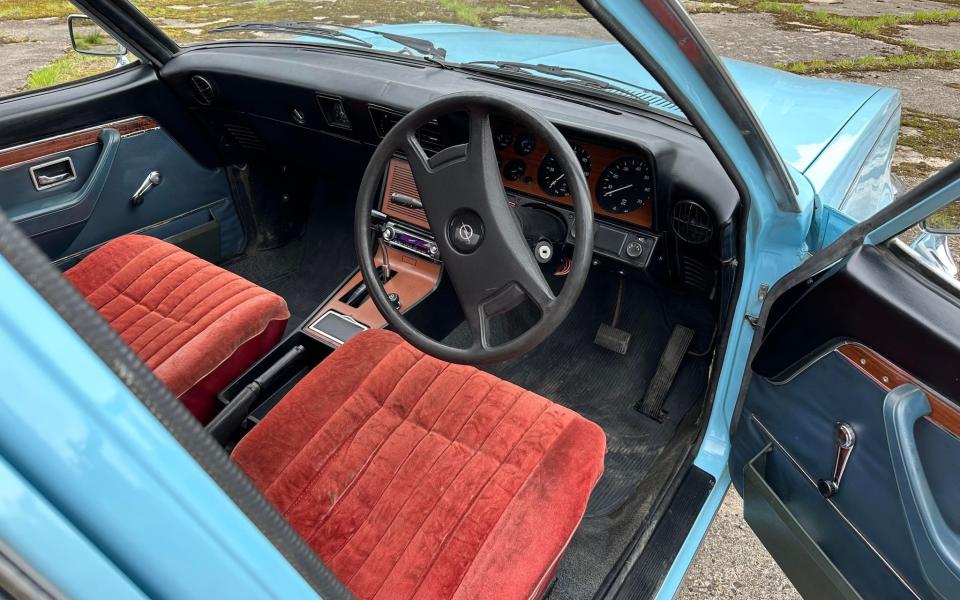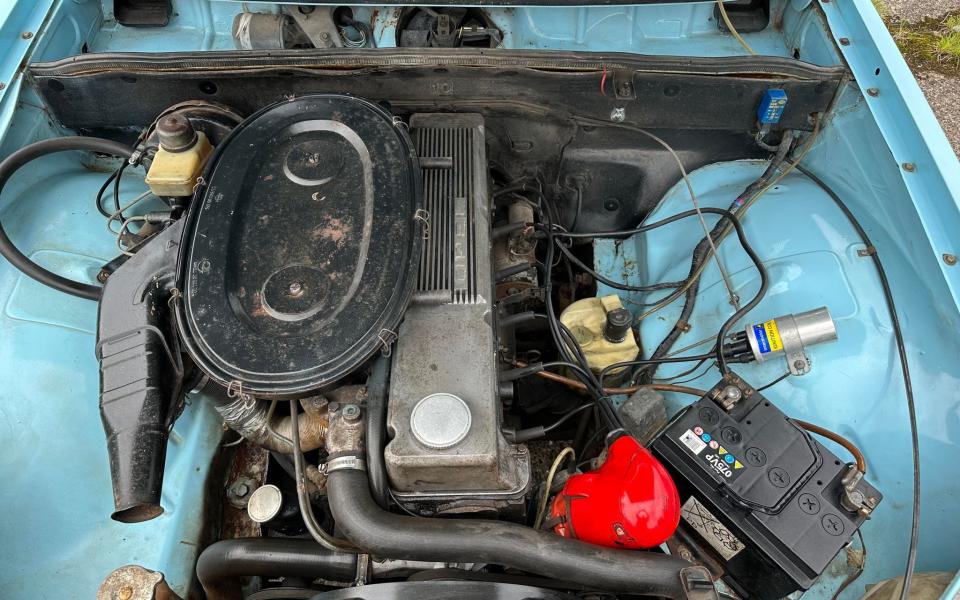UK’s rarest cars: 1974 Opel Commodore B 2.8 GS Automatic – the only one left

Executive vehicles of the past often provide a fascinating insight into the social aspirations of a bygone age. The interior of this 1974 Opel Commodore, owned by Elton Murphy, is a symphony of red velour upholstery – giving the impression of a mobile living room. In its heyday, some motoring journalists also praised the Commodore’s road manners. Yet, NGV 475M is probably the sole surviving example in the UK.
The original Commodore A debuted in 1967 as a more powerful and luxurious version of the Type C Rekord, with the first post-war Opel sales to the UK beginning that same year. Parent company General Motors encouraged rivalry among its marques with Opel and Vauxhall often competing in the same market sector overseas.
In 1971, Opel introduced the Rekord D, followed shortly afterwards by the Commodore B with a choice of 2.5-litre or 2.8-litre engines. General Motors decreed the range would share floorpans with Vauxhall’s forthcoming Victor/Ventora FE range. However, according to one 1973 report, collusion was “always denied by both parties”.
British sales of the Rekord/Commodore began in early 1972 and The Telegraph thought that, when compared with the Vauxhall FEs, they had “a more eager, sporty feel with tauter suspension”.

Autocar noted that, over the past few years, Opel’s image had changed from “family cars” to products that appealed to the discerning motorist. A similarly impressed Motor reported that Opel’s management “is now composed of discerning and enthusiastic motorists”.
When Car tested the Opel in 1973 opposite the Ventora and Ford Granada GXL, they instantly dismissed the Vauxhall as its ride and handling “is really not good enough for this class of car”. It concluded: “If roadability is your requirement, then it has to be the Commodore.” Shortly afterwards, Motor found virtually every member of its staff who drove the Opel “said that it would be his choice of £3,000 sporting saloon”.
Buyers tended to opt for the smaller Opel Ascona and Kadett, as the Commodore saloon with automatic transmission cost £3,418 in 1974 – over £500 more than a Ford Granada Ghia. It also cost £200 more than a Rover 3500 P6B and £900 more than a Triumph 2500 PI. Even the Audi 100 GL cost a mere £2,672 in automatic guise.
As for the nearest Vauxhall equivalent, the 3.3-litre Ventora FE Automatic was more than £1,000 cheaper than the Commodore, but the two had entirely different images: the Opel was a car for company directors who aspired to drive a BMW 525 but realised its £4,349 price tag was out of their reach. The Vauxhall was suited to middle managers who regarded a bottle of Blue Nun as the epitome of the good life.
Late 1974 saw Opel GB import the Commodore GS/E with Bosch fuel injection, and production ended in 1977 with the launch of the Rekord D family. Opel sold comparatively few of the 140,827 Commodore Bs in the UK, and most surviving examples are the Coupe version. Murphy, who runs UK Barn Finds, only recently came by his saloon.

Murphy finds that his Commodore attracts considerable attention, although many passers-by often ask, “Is it a Ford?” On the road, he much enjoys the power of the six-cylinder engine, although the heavy petrol consumption shows that Opel developed the Commodore long before the 1973 fuel crisis.
For all its matt black external details, the Murphy Commodore appears less quasi-American and more of the archetypal Euro-executive saloon. In left-hand drive form, NGV would have been the perfect vehicle for Charles Bronson to drive in a 1970s German-French-Italian film thriller.
As for the UK, a select number of buyers followed the brochure’s advice: “The only thing your chauffeur will not like about it is that he will never get to drive it.”
Read more from The Telegraph’s rarest cars series: UK’s rarest cars: 1978 Vauxhall VX 2300 GLS, one of only two left
Do you have any memories of the Opel Commodore or Kadett? Please share them in the comments section below

 Yahoo News
Yahoo News 
